Trees Birds Mammals Fish Amphibians Reptiles
Wild Algarve
Bookshop
Hygrocybe citrinovirens (J.E. Lange) Jul. Schäff. - Citrine Waxcap
Phylum: Basidiomycota - Class: Agaricomycetes - Order: Agaricales - Family: Hygrophoraceae
Distribution - Taxonomic History - Etymology - Identification - Culinary Notes - Reference Sources
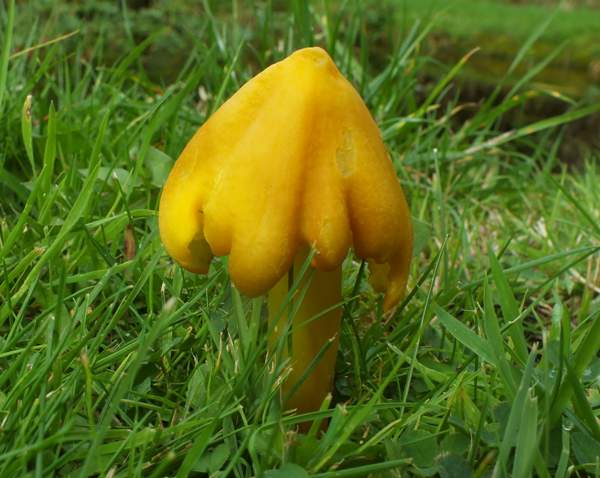
Quite the palest of the yellow waxcaps, and with an acutely conical cap that tends to split as the fruitbody matures, unfortunately the Citrine Waxcap is rather an uncommon find. Fruiting from late summer to early winter, this is one of the few yellow waxcaps that are fairly easy to identify from characters that are readily visible in the field.
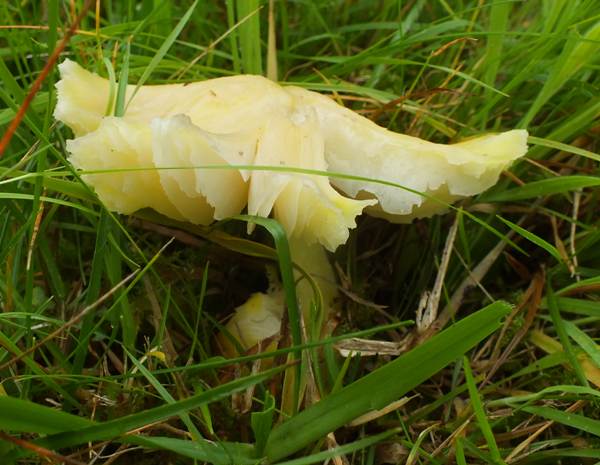
Distribution
Although widespread across suitable unimproved grassland habitats, Hygrocybe citrinovirens is uncommon or rare in Britain and Ireland.. It is a cold climate waxcap and occurs in Scandinavia, becoming less common further south on mainland Europe. A similar species, Hygrocybe virens, is recorded in parts of North America.
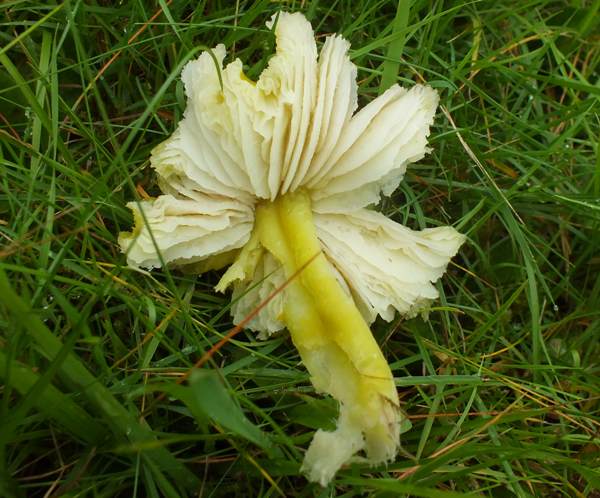
Taxonomic history
Originally described in 1923 by Danish mycologist Jakob Emanuel Lange, who named it Camarophyllus citrinovirens, the Citrine Waxcap was relocated to its present genus in 1947 by German mycologist Julius Schäffer (1882 - 1944).
Synonyms of Hygrocybe citrinovirens include Hygrophorus citrinovirens (J.E. Lange) Konrad & Maubl., Hygrocybe brevispora F.H. Møller, Hygrophorus brevisporus (F.H. Møller) P.D. Orton, and Camarophyllus citrinovirens J.E. Lange,
Etymology
The genus Hygrocybe is so named because fungi in this group are always very moist. Hygrocybe means 'watery head'.
The specific epithet citrinovirens comes from the Latin citrinus, meaning lemon yellow, and virens, meaning green; it is a reference to the greenish-lemmon-yellow colour of the cap of his waxcap mushroom.
Identification guide
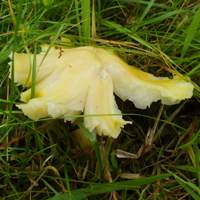 |
Cap
2.5 to 9cm in diameter, the dry cap is narrowly conical at first, often with a lobed margin. As the cap expands it tends to split radially. At maturity the surface texture is radially fibrillose, sometimes squamulose (scaly) near the margin and near the centre, which remains sharply umbonate or papillate as the margins flare upwards. The cap colour is pale lemon yellow, greenish yellow or occasionally orange yellow, while the underlying cap flesh is much paler. |
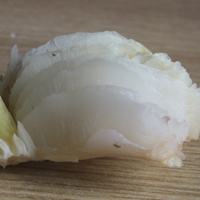 |
Gills
Free or adnexed, broad, white initially but turning slightly yellowish with age; edges often noticeably serrate. |
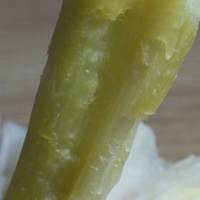 |
Stem
Level, 0.7 to 2cm across and 5 to 13cm tall; usually laterally compressed when mature; pale yellow or greenish yellow (occasionally tinged with orange), whitier towards the base. Stem flesh is yellowish, paler towards the centre. Surface is dry; texture matt or silky when young, often becoming longitudinally fibrillose. Sometimes stems are finely squamulose towards the apex or pruinose throughout. There is no stem ring; |
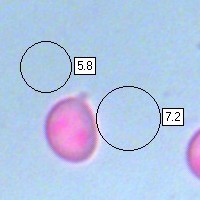 |
Spores
Ellipsoidal (occasionally subglobose) not significantly constricted but some spores have a concave side; smooth, 6.5-8.5 x 4-6μm; inamyloid.
Spore print
White. |
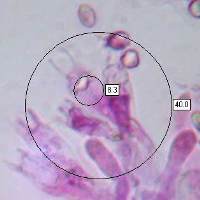 |
Basidia
Mainly four-spored.
|
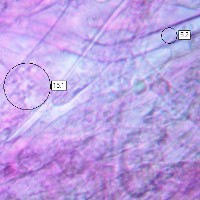 |
Pileipellis
A cutis with hyphal elements usually 3.5 to 11μm in diameter.
|
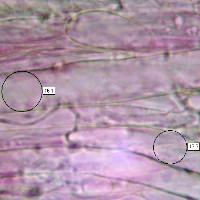 |
Gill trama
Gill trama regular with hyphal elements typically 250 to 600μm long and 12 to 30μm in diameter.
|
Odour/taste |
Not distinctive. |
Habitat & Ecological role |
In unimproved acid, neutral or slightly alkaline grassland, including upland meadows, parkland, old lawns and churchyards; very rarely in woodland or on woodland edges. |
Season |
August to November in Britain and Ireland. |
Similar species |
Gliophorus laetus the Heath Waxcap is much smaller and has greyish decurrent gills.
Hygrocybe chlorophana has a flatter, slimy cap in wet weather.
Hygrocybe reidii occasionally occurs in an all-yellow form; its crushed gills smell like honey.
Gloioxanthomyces vitellina is viscid and has widely-spaced decurrent gills with hyaline (see-through) edges. |
Culinary Notes
On a Europe-wide scale waxcap fungi are now quite rare, and so although in western Britain many of the acid-soil species are still plentiful most mycologists deplore the suggestion of these lovely fungi being gathered to eat. The Citrine Waxcap is a rare species classed as Vulnerable on the IUCN Red List, and so it should not be collected other than for essential research purposes.
Reference Sources
Fascinated by Fungi, 2nd Edition, Pat O'Reilly 2016, reprinted by Coch-y-bonddu Books in 2022.
Fungi of Northern Europe, Volume 1 - The Genus Hygrocybe, David Boertmann, 2010.
Dictionary of the Fungi; Paul M. Kirk, Paul F. Cannon, David W. Minter and J. A. Stalpers; CABI, 2008
Taxonomic history and synonym information on these pages is drawn from many sources but in particular from the British Mycological Society's GB Checklist of Fungi.
Top of page...
Fascinated by Fungi. Back by popular demand, Pat O'Reilly's best-selling 450-page hardback book is available now. The latest second edition was republished with a sparkling new cover design in September 2022 by Coch-y-Bonddu Books. Full details and copies are available from the publisher's online bookshop...